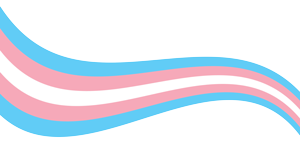HIV/AIDS in the U.S.
HIV/AIDS in the U.S.
Nearly 1.2 million people in the United States are living with HIV, and approximately 13% of them don’t know it.

- Estimated new HIV acquisitions decreased 12% from 36,300 in 2018 to 31,800 in 2022, propelled by a 30% decrease among young people aged 13-24 years.
- In 2022, Southern states accounted for 49% of new HIV acquisitions.
- Black/African Americans accounted for 37% of new HIV acquisitions in 2022, although they comprise only about 12% of the population. People who identify as Hispanic/Latino accounted for 33% of new HIV acquisitions, although they comprise only about 18% of the population.
- Injection drug use accounted for about 1 in 14 HIV diagnoses in the U.S. in 2022.
- For every 100 people with diagnosed HIV in the U.S. in 2022, 87 knew their status, about 76 received some HIV care, 54 were retained in care, and 65 were virally suppressed.
- More than 80% of people overall with HIV diagnosed in 2022 were linked to care within one month of diagnosis.
- In 2022, there were 19,310 deaths among people with diagnosed HIV in the U.S. and six territories and freely associated states. These deaths may be due to any cause.
Gay, Bisexual and Other MSM

- MSM were the population most affected by HIV in the U.S. in 2022.
- Of the 31,800 estimated new HIV acquisitions in the U.S. and dependent areas in 2022, 67% were among gay, bisexual and other men who reported male-to-male sexual contact. This includes acquisition attributed to male-to-male sexual contact and injection drug use (men who reported both risk factors.)
- Compared to 2018, the annual number of HIV acquisitions among men who have sex with men (MSM) decreased 10%.
- In 2022, 35% of new HIV diagnoses were among Black/African American MSM.
- In 2022, 37% of new HIV diagnoses were among Hispanic/Latino MSM.
Transgender and Additional Gender Identity (AGI) People

- While transgender men accounted for less than 1% (66) of new HIV diagnoses, transgender women accounted for 2% (869) of new HIV diagnoses.
- Among transgender and AGI people diagnosed in 2022, 40% (396) were Black/African American and 38% (379) were Hispanic/Latino.
- By age group, the largest percentage of new diagnoses among transgender and AGI people occurred among people ages 25–34 (45%) and 13–24 (31%).
HIV in Women (Based on Sex Assigned at Birth)
- Women accounted for 19% of new HIV acquisitions in 2022.
- Among all women aged 13 and older diagnosed with HIV in 2022, 50% were Black/African American, 24% were white, and 20% were Hispanic/Latina.
- Although Black women accounted for only 9% of HIV diagnoses overall in 2022, among cisgender women, they accounted for 50% of HIV diagnoses and, among transgender women, 41% of HIV diagnoses.
- Among people living with HIV at the end of 2022, women had one of the lowest rates of viral suppression (64%).
HIV in Young People

- Youth aged 13–24 accounted for 20% of new HIV acquisitions in 2022, a decrease of 30% compared to 2018. People aged 25–34 accounted for 40% of new HIV acquisitions in 2022.
- Condom use among sexually active students, when surveyed about their last sexual intercourse, decreased from 59% in 2013 to about 52% in 2023.
- Among people living with HIV, those aged 13–24 are least likely of any age group to be aware of their HIV status.
- This age group has high rates of sexually transmitted diseases and low rates of condom use, both factors in increasing the risk of getting or transmitting HIV.
- Only 6% of cisgender and heterosexual high school students have ever tested for HIV; only 9% of LGBTQ+ students have ever tested.
Sources:
HIV.gov U.S. Statistics Overview
Youth Risk Behavior Survey, 2013-2023 (CDC)
May 2024 CDC Surveillance Reports
*Data that includes 2020–2022 should be interpreted with caution due to the impact of the COVID-19 pandemic on access to HIV testing, care-related services, and case surveillance activities in state and local jurisdictions.
(Last updated October 2024)